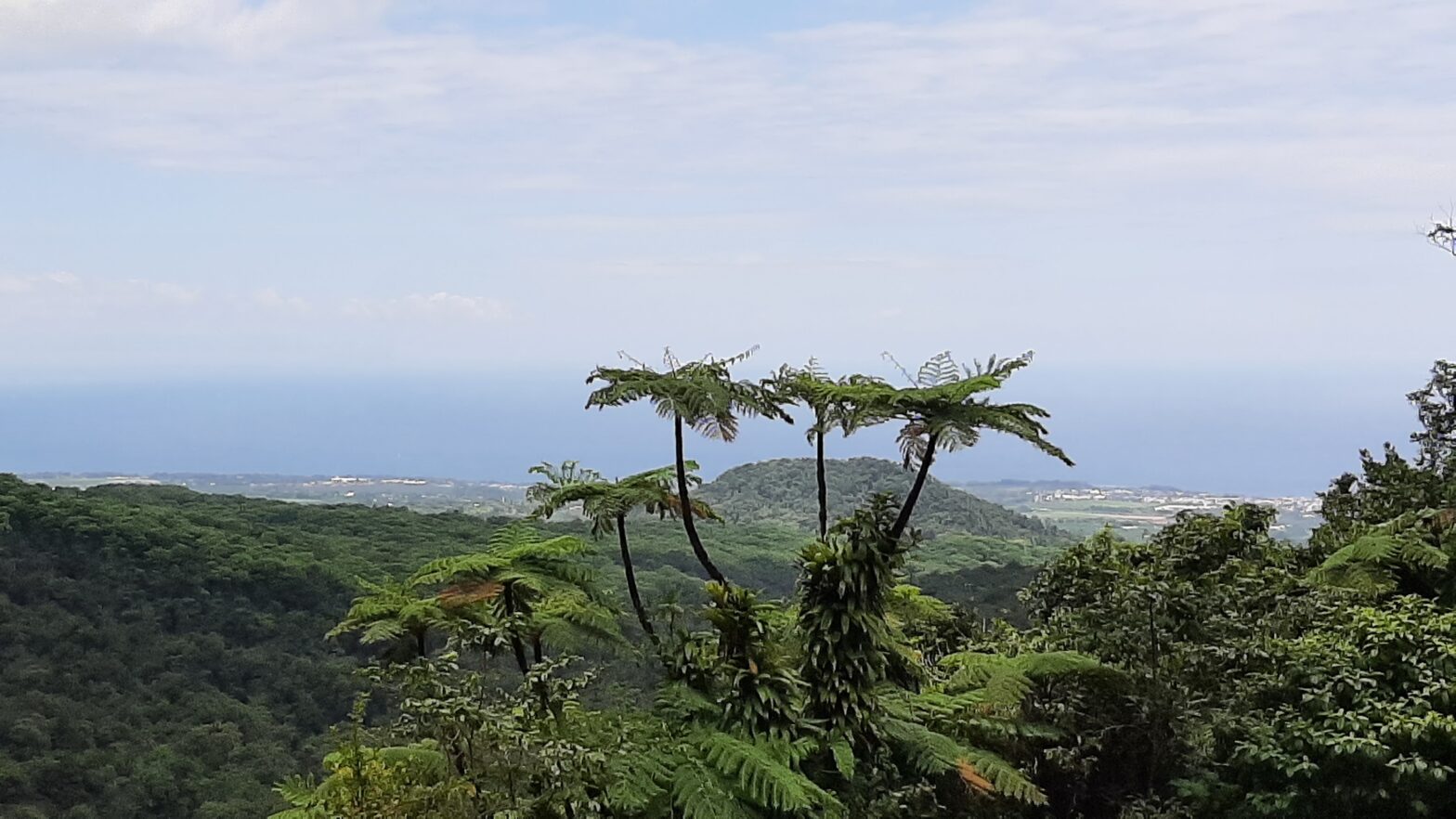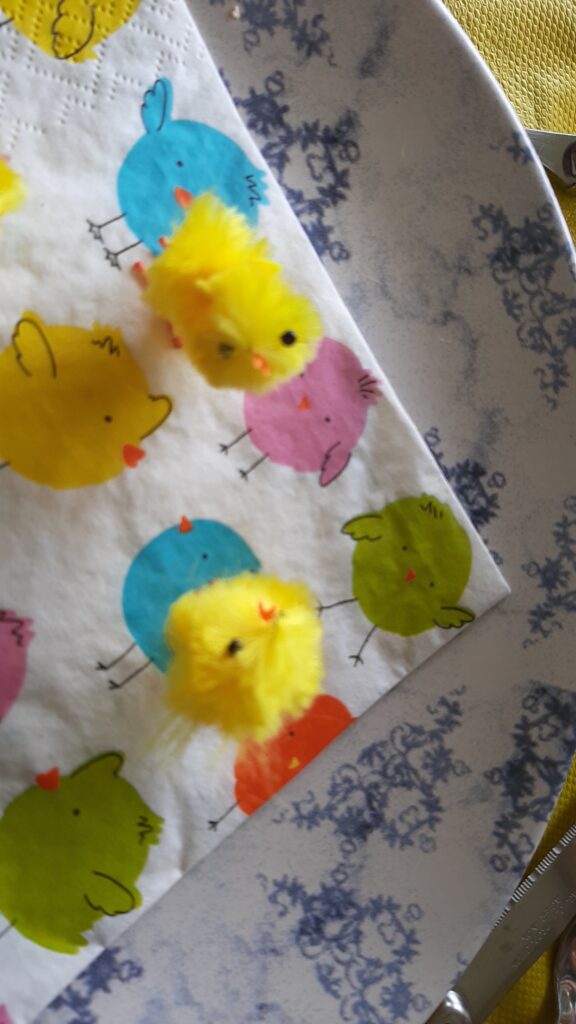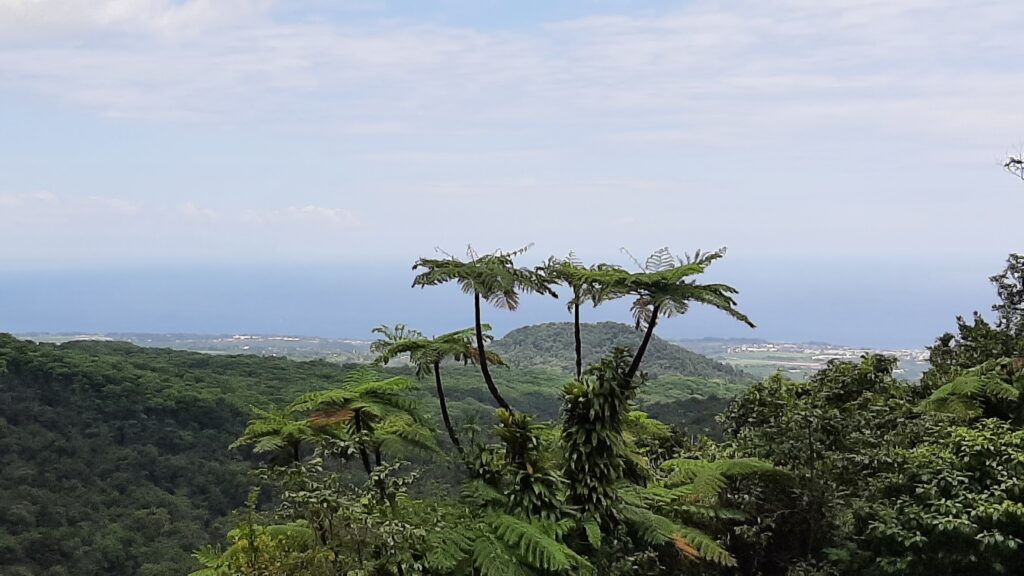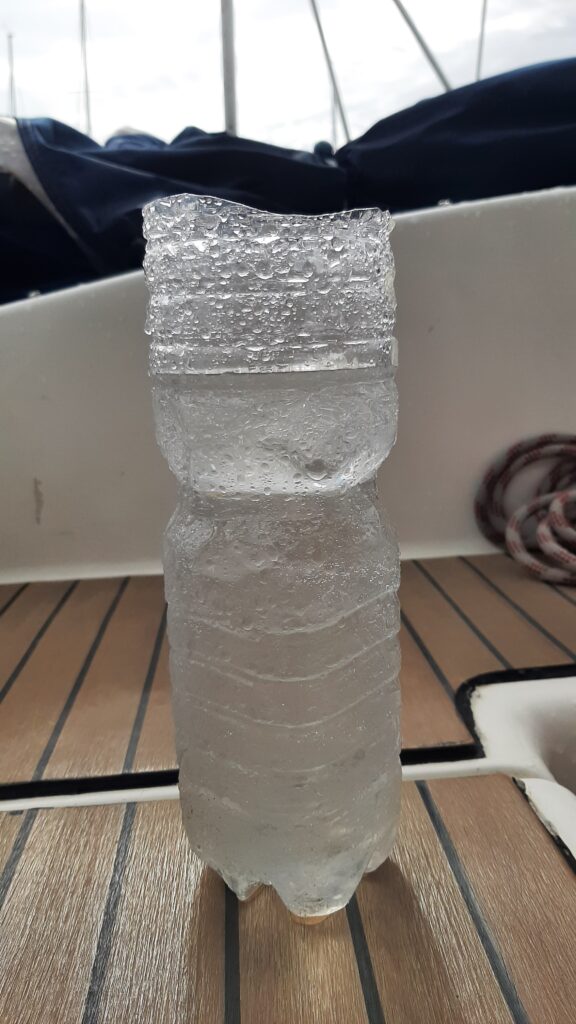So, on April 9 we sail from Dominica to Guadeloupe, or to be more precise the Îsles de Saintes, just below the main island of Guadeloupe. The wind is again strong, but luckily we don’t have to sail close to the wind, but a little lower, which makes it a bit less uncomfortable. After about four hours we sail between the islands and moor at a mooring in front of the village Bourg les Saintes near the island of Terre des Hauts.
It is a big contrast to Dominica. The Îsles de Saintes are much more barren, drier and above all more touristy. In the morning, tourists are taken to the islands by ferries, who then all rent a scooter or golf cart and race across the island. We walk feeling a bit deserted but it’s okay. It is also nice to eat ice cream, sit on terraces and do (French) groceries. Clearing customs is also very easy: just enter some data behind a computer and pay 3 Euro.
After a few days at the Saintes we sail on to the main island of Guadeloupe, where we moor in the marina of Bas du Fort because we expect another visit from family; my sister is coming over for a week. Guadeloupe is again typically French and comparable to Martinique. We notice that Guadeloupe is full of chickens. Where on other islands there are often many (stray) dogs (the poorer the island the more), in Guadeloupe you stumble over the chickens, roosters and chicks. On the street, on the beach, in the woods, on the terrace, everywhere. What is also striking in Guadeloupe and what we also had already noticed in Martinique, are the large numbers of burn marks in the asphalt. All over the island at roundabouts, intersections, or just in a village you see that there have been burning car tires on the asphalt. The population has resisted a number of Corona measures, resulting in riots, arson and looting. The Dutch Foreign Affairs travel advice for Martinique and Guadeloupe almost advises against going there, and that only because of a few riots in the past….

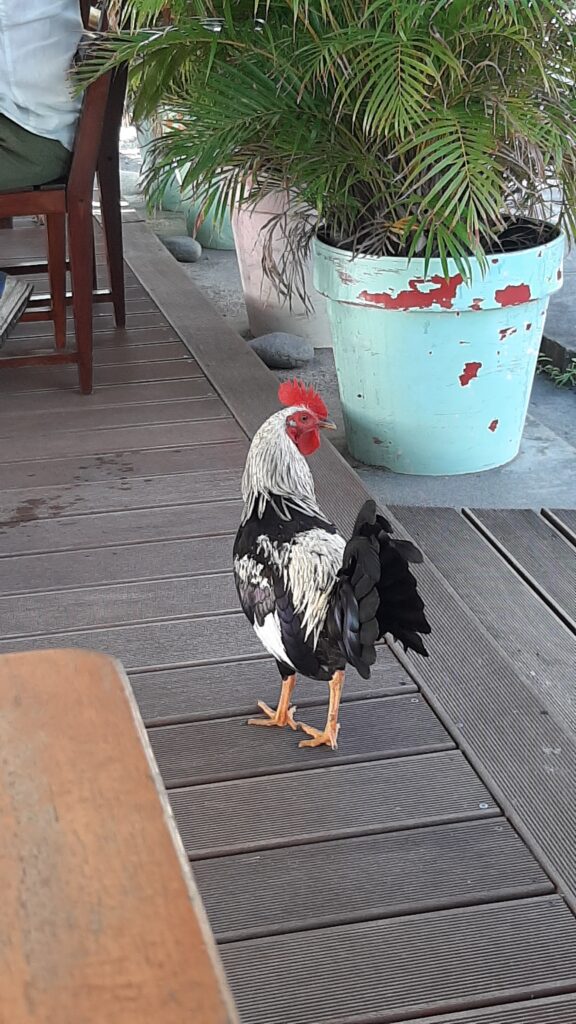
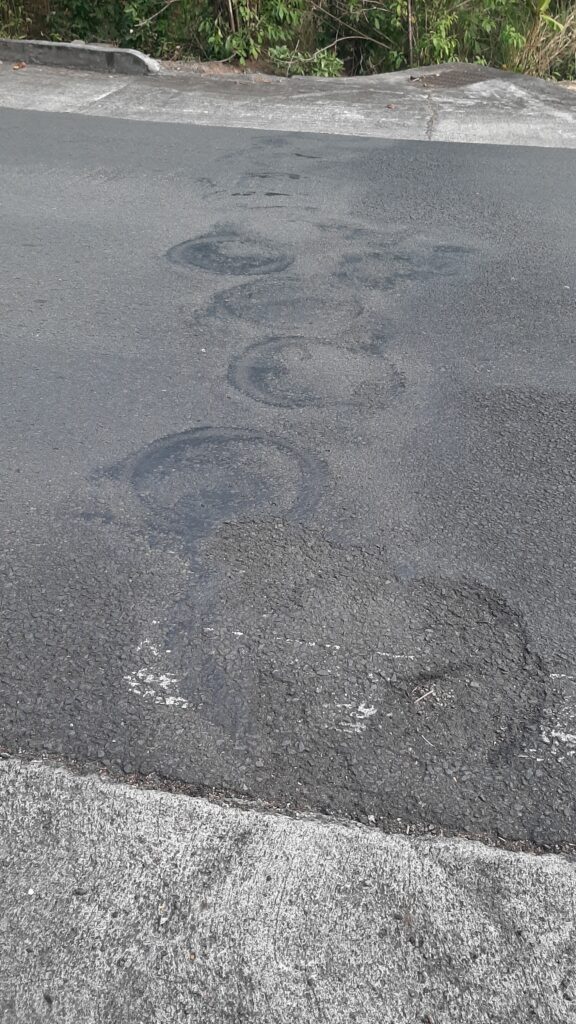
When my sister arrives, we plan the activities for that week, which we then find ourselves chasing for the rest of the week. This gives her a nice insight into the life of a “blue-water cruiser” and the misery that entails 😉
It starts with a visit to the slavery memorial and museum. That appears to be closed due to Good Friday, while the website stated that it was open on Sundays and public holidays. Continued to the “city” of Point à Pitre, that also appears to be extinct because of Good Friday. Then the idea is to rent a nice/luxury accommodation somewhere on the island for a few days so that we can relax there with sun, sea, swimming pool and a view. That turns out not to be easy either, because of Easter it is high high season and there is hardly anything available. After hours of searching on the web we finally find one, but it is on the extreme northwest side of the island while we also want to visit the Petite-Terre islands on the extreme east side of the island. We decide to sail the boat to the east and leave it there while we stay in the house for a few days, then come back and sail to the Îles de Petite-Terre. For the Petite-Terre islands you have to reserve (a mooring) by the way. After (once again) hours behind the laptop on a buggy website, we actually managed to reserve a mooring for two nights and a day, albeit at a higher cost, because it only works by booking a number of separate slots. And after some time on the internet again, it is even possible to rent a car to ride across the island. Incidentally, it is not possible to book the marina on the east side. It turns out that they adjust their opening hours to the Easter weekend and are therefore closed.
When we finally think that we have everything arranged, we want to leave the marina on Saturday for the eastern goal after the necessary provisions. However, there appears to be no water in the marina, while we still want/need to fill up with water and also would like to take a shower. After a long in vain wait we decide to go anyway. It turns out we waited too long, because we leave so late that we don’t make it to our planned anchorage for that night, but only one earlier (actually almost right around the corner from the harbor 😉). Not that bad in itself (although this anchorage turned out to be very rolly), but the consequence turned up the next day when we also didn’t make it to the ultimately intended place to leave the boat. Due to the strong wind and strong current, both against, and the impossibility to motor for long (more on that later) we were forced to anchor in Ste. Anne and leave the boat instead of in St. Francois. This in turn meant that I had to drop my sister ashore and she had to make it overland (and with the help of a friendly Guadeloupean) to St. Francois to pick up the rental car.
In the meantime, we put the boat behind its anchor, give some extra chain and pull back once more and then dive to the anchor to make sure that it has dug in properly, after which we pack the necessary things and sail with the dinghy to the shore where we took the car to the promised house and leave the boat behind.
The cottage was beautiful. Beautiful location, nice plunge pool, wonderful shower and everything was built half open so that you were almost always outside. Perhaps a bit of a shame that the second day was quite rainy so our planned walk through the rain forest lived up to its name; the forest was soaking wet, including the path, which had largely turned into a mud bath. The walk was listed as “facile” but due to the weather that might have had to be adjusted a bit. Although it may not help either if you do it on flip flops. We would say that it was “growsome” weather and the flora and fauna looked beautiful.

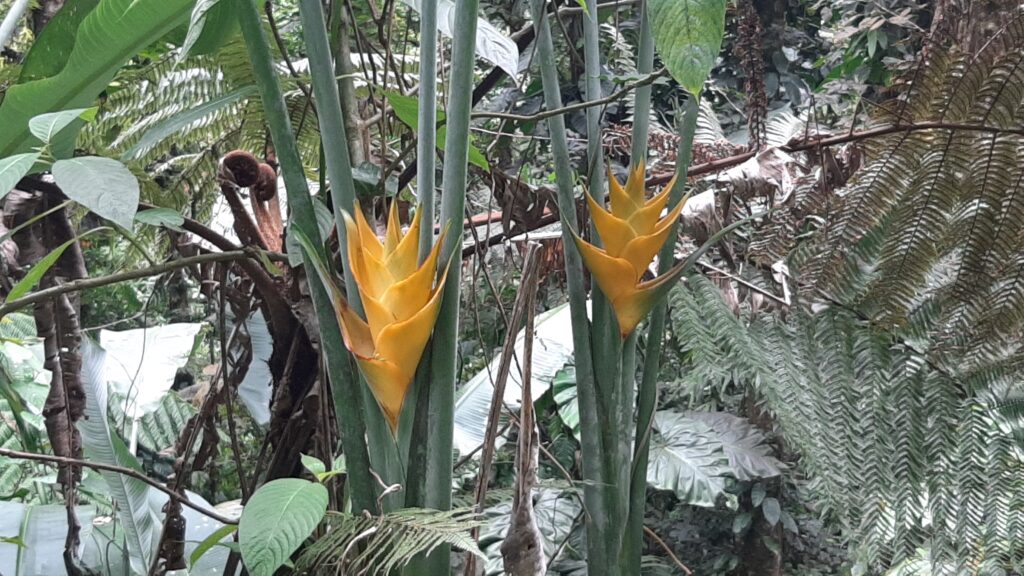




The next day the weather had improved and we decided to take a walk along the coast, which we expected would be drier than in the rain forest inland. That was true, only we had made a mistake that this walk was not listed as a facile but as a dificile; it was quite a scramble, although of course it again didn’t help that we did it on flip-flops.
At the end of the afternoon an email came in with the title “YOUR ANCHOR HAS FAILED!”. Excuse me?!? Has Pantera been knocked off her anchor? Is she now pounding on the rocks on the lee shore? Is it done, over and out with the trip?!? All kinds of disaster scenarios run through your head when you see that title. With a pounding heart I open the e-mail and read that it is not that bad: during the bad weather the day before it turned out to have been very windy on the east side. Pantera’s anchor failed to hold and started to slip. Slowly, Pantera moved to the lee shore. Fortunately, this was noticed by a neighboring boat (there were a few other boats in that spot) and he and the crew of two other boats were able to save Pantera from sinking by laying her in a slightly different place where the anchor apparently did hold. Phew, what a relief and what gratitude for the attentiveness and decisive response of the neighboring boats. Of course, it does gnaw that it did happen at all, despite our heavy, well-known anchor (Rocna 25kg) and the fact that we had done our best to leave Pantera properly moored, including checking whether the anchor was dug in properly…
The next day we left the house early and drove to Pantera in Ste. Anne. My sister had to deliver the car back to St. Francois and got a lift back. The neighbor skipper was not present on his boat, so we left a thank you in the form of Dutch delicacies that we had just received from my sister from NL 😊. Because it was already too late to sail to the Petite-Terre islands (before dark) we sailed to St. Francois, anchored there and continued the next day to the islands. A pity for the extra reserved time slot of the day ☹. The Petite-Terre islands are nice. Beautiful blue water, beaches, iguanas and good snorkeling with turtles, lemon sharks, rays and of course many fish. Day trippers come with boats, but they all disappear at the end of the afternoon, after which we spent the night with only three other boats.
The next day it was already over for my sister: she flew back to NL and we then set course again for the marina of Bas du Fort to start the umpteenth chapter of the engine. You see, all misery such a journey 😉
So, the engine again and again a warning for technical tinkering for the next two paragraphs. Despite all the feathers you put in my ass last time, it was unfortunately to no avail. The repair lasted about 20 engine hours, but then diesel started to leak into the oil again. Sigh. Replacing the seals cured the symptoms, but not the cause. So, again we used the engine as little as possible and arrived that way in Guadeloupe. After my sister had left, I took the injection pump off again to have it completely overhauled by a local diesel specialist: a Guadelopian with an old, torn dustcoat, who was missing his index, middle and ring fingers on one hand (not very handy for an engine mechanic) and whose workshop and warehouse looked as if an earthquake had just occurred. Those are the better specialists! So I had all confidence in it.
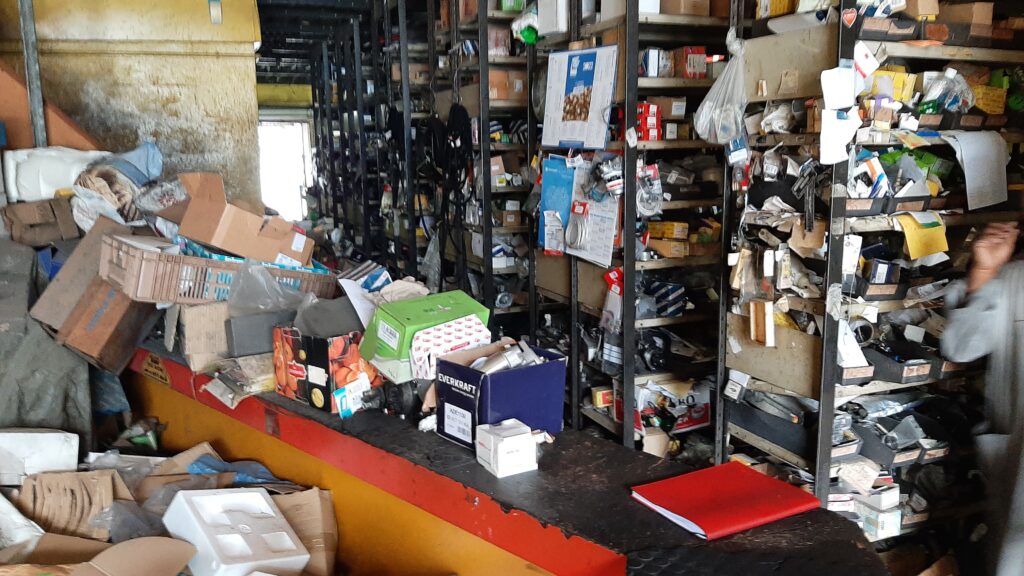

After three days we were able to collect the pump again. The price was not too bad if you compare it with what you would have paid for it in Europe. After remounting the pump, there was still one thing with the adjustment of the idle, but after breaking some seals, that could also be set at a better speed and it must be said, to this day there is no diesel more in the oil. Fingers crossed that it is finally resolved.
While waiting for the pump we rented a car to ride across the island a bit. We also visited another waterfall: the Carbet waterfalls. By now we had already seen quite a few waterfalls, but this one was described as definitely worth it. Unfortunately, that turned out to be quite disappointing: after having to pay an entrance fee (5,- Euro pp) you could walk almost in a column with other tourists for fifteen minutes on a path to a viewing platform from which you could see the waterfall in the distance. Duh…

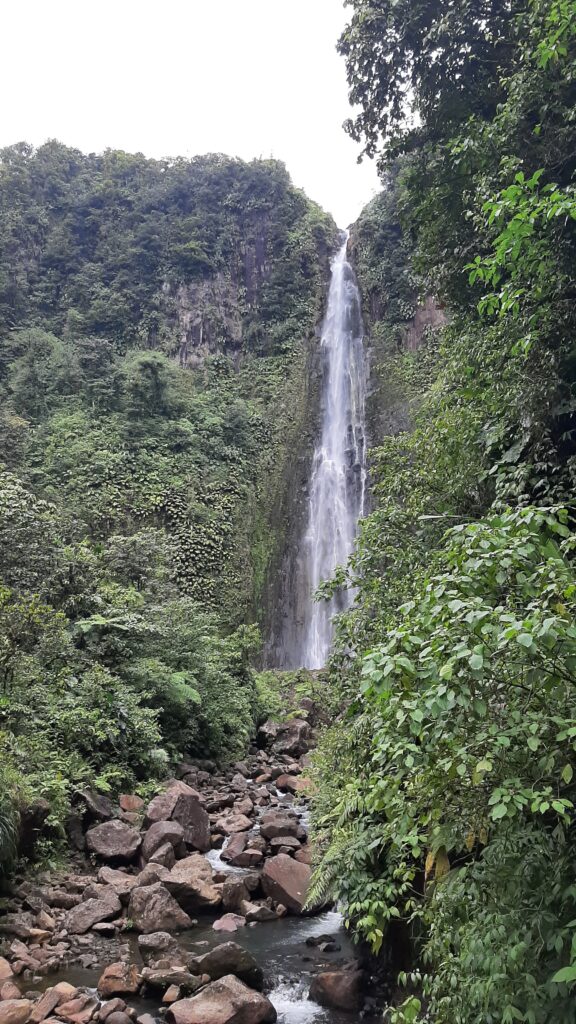
The fact that the engine was working again also meant that we could continue. The night before departure from the marina it rained a little bit: more than 150 mm in one night! That normally falls in two months in the Netherlands. The next day it turned out that the sea had turned brown instead of blue from all the mud that had washed in, including the necessary branches and coconuts. The power also turned out to be out, with the result that the port office could not open and we could not return our key to get the deposit back. In fact, there was no one left from the personnel in the harbor at all. After waiting for a while, a neighbor boat was kind enough to take our key and advance our deposit.
We then sailed around the west side of Guadeloupe with a few anchor stops to finally clear out in Deshaies (again nice, easy and cheap) and set course for Antigua on 3 May. The last island we will visit here in the Caribbean and from where our boat will unfortunately go on transport to Europe. As we were used to, the crossing was tough with strong wind and current. We had to beat upwind the last part along the coast of Antigua, but the current, wind and waves turned out to be so strong that the beating angles were too bad and we had to crank up the engine to reach English Harbor before dark. Fortunately, we were able to use the engine for longer periods again…..
